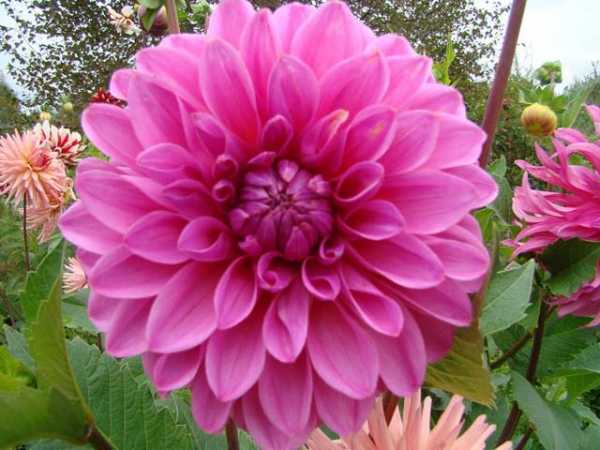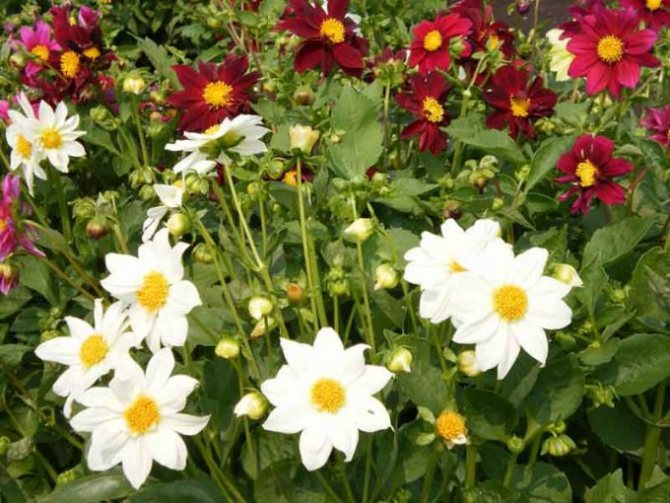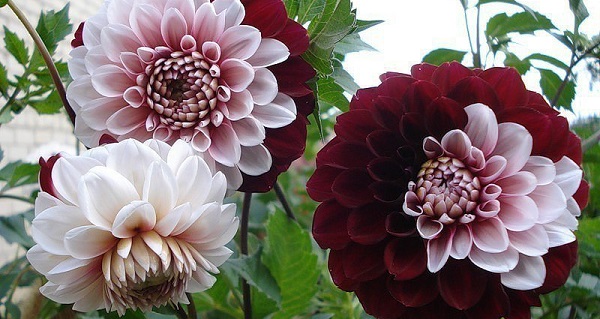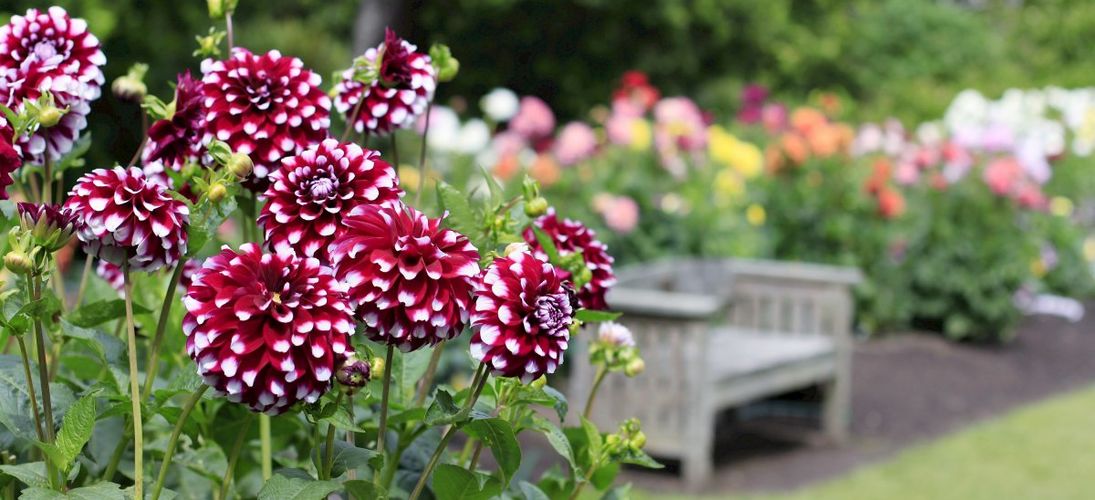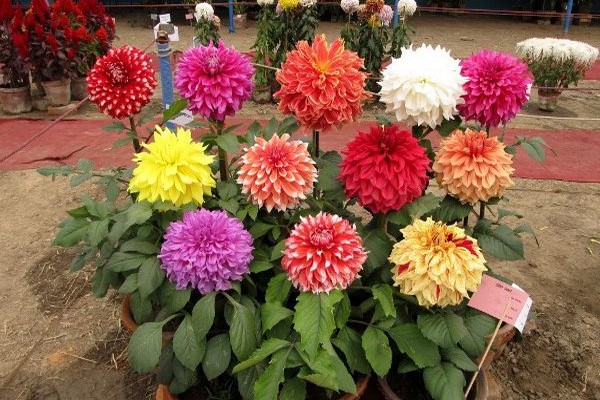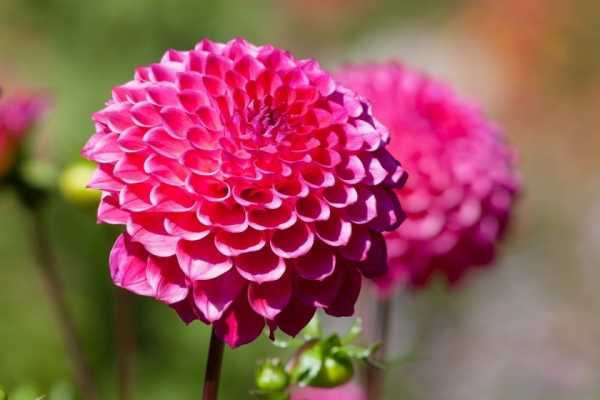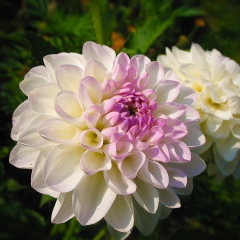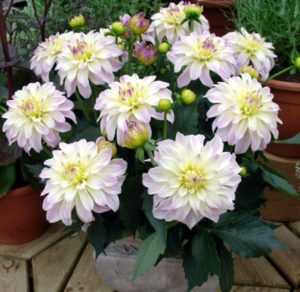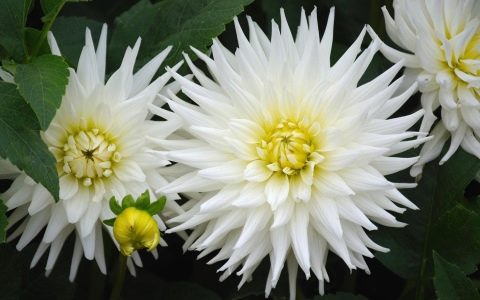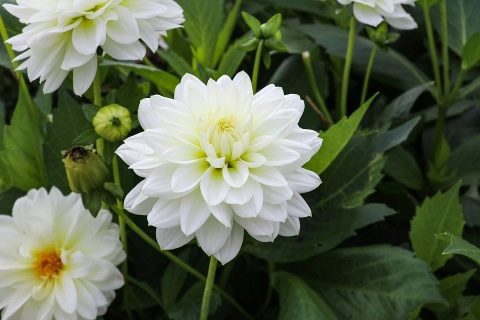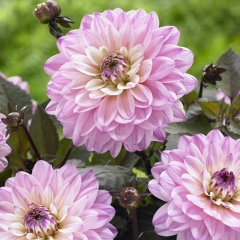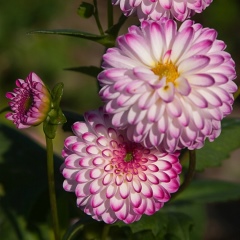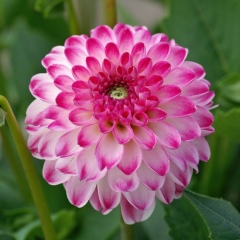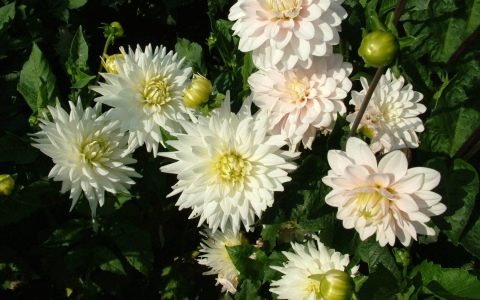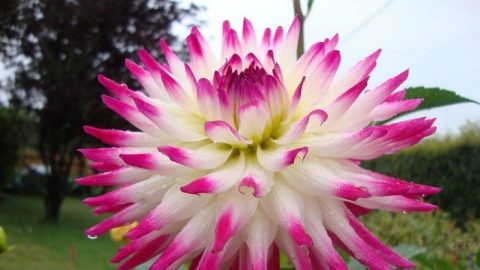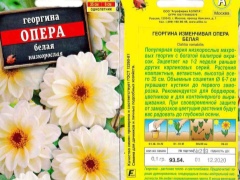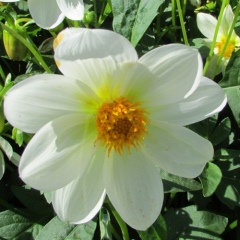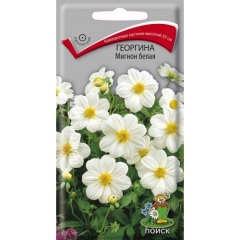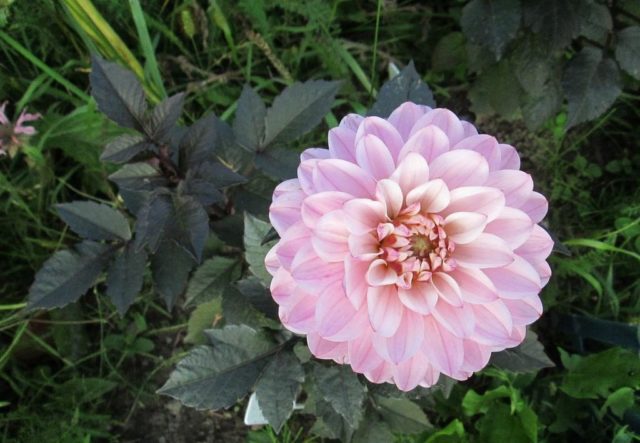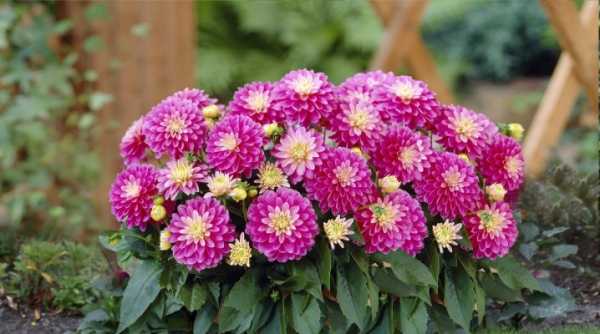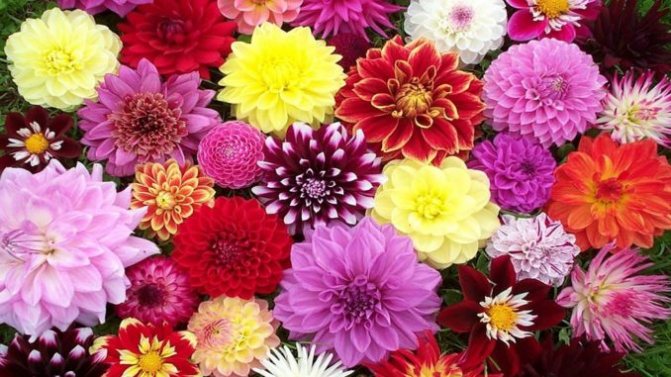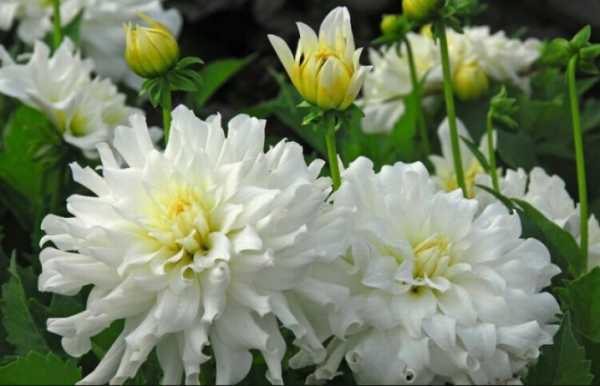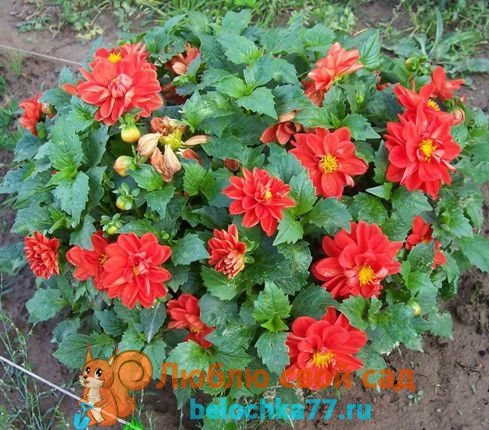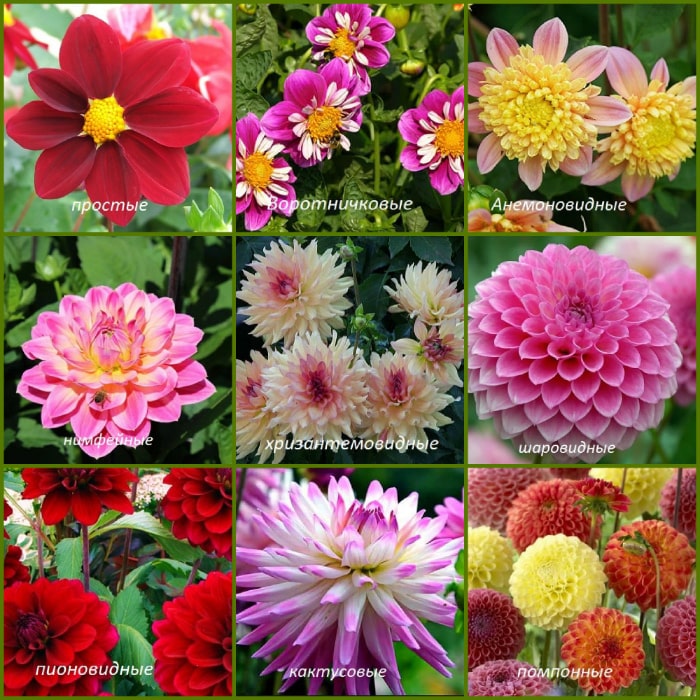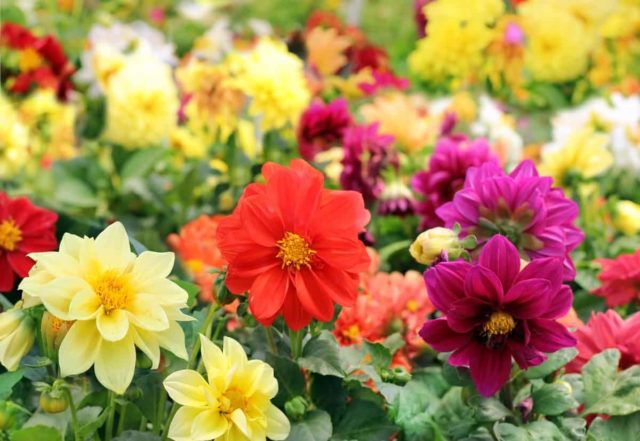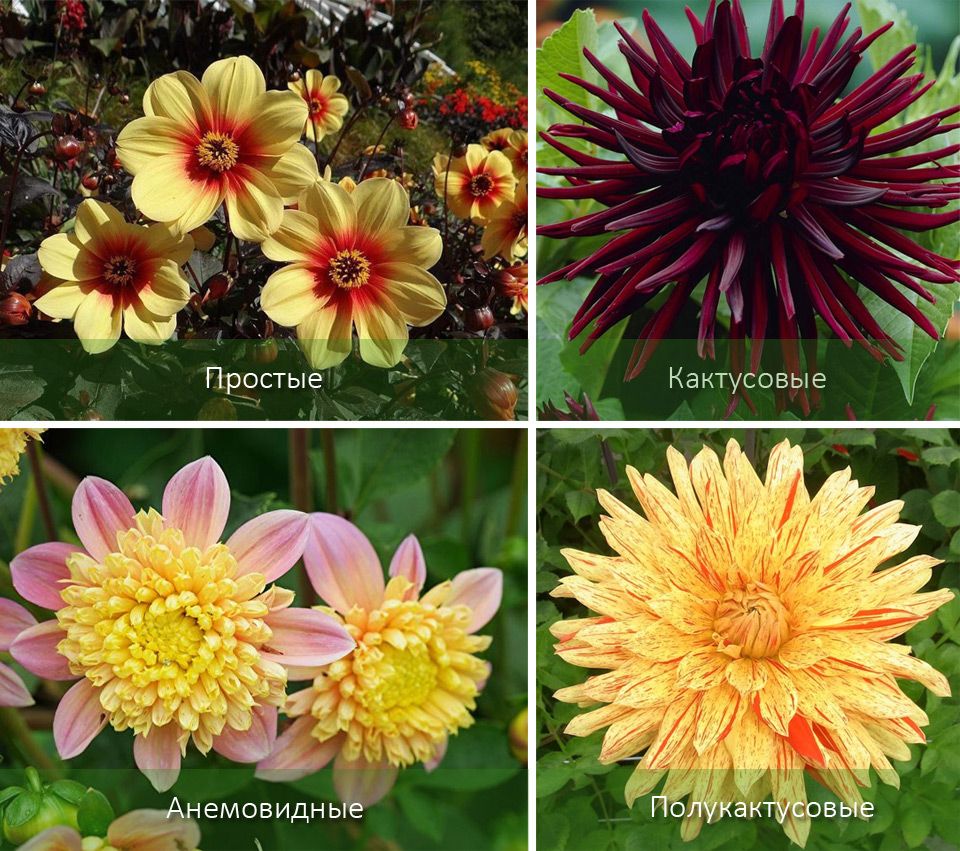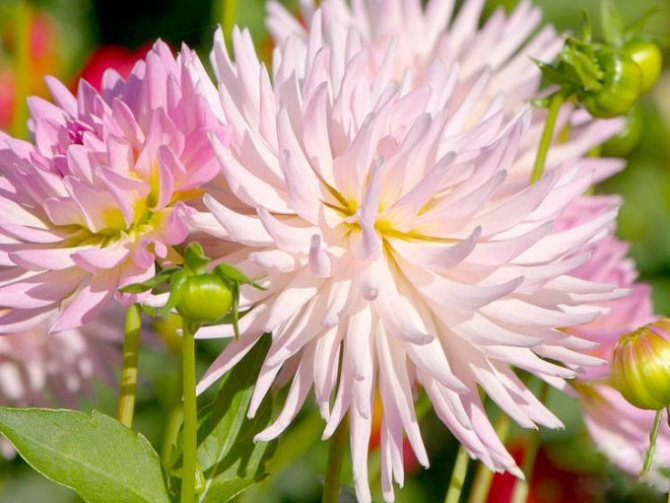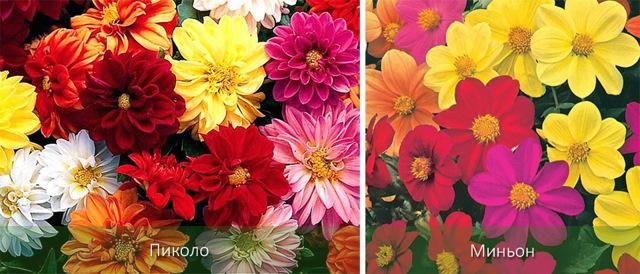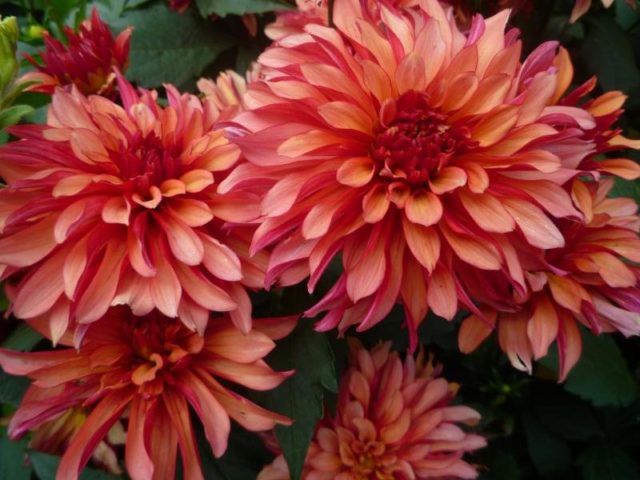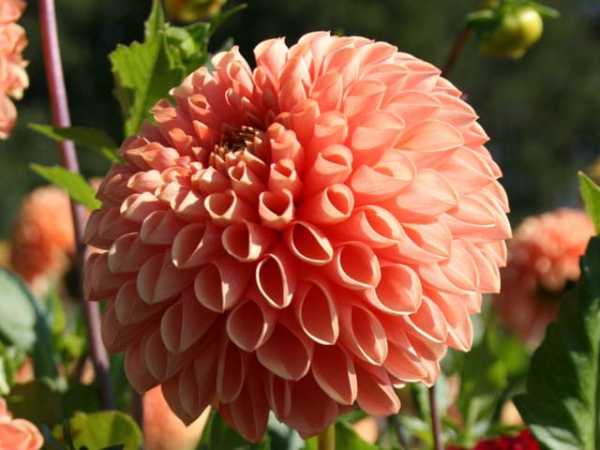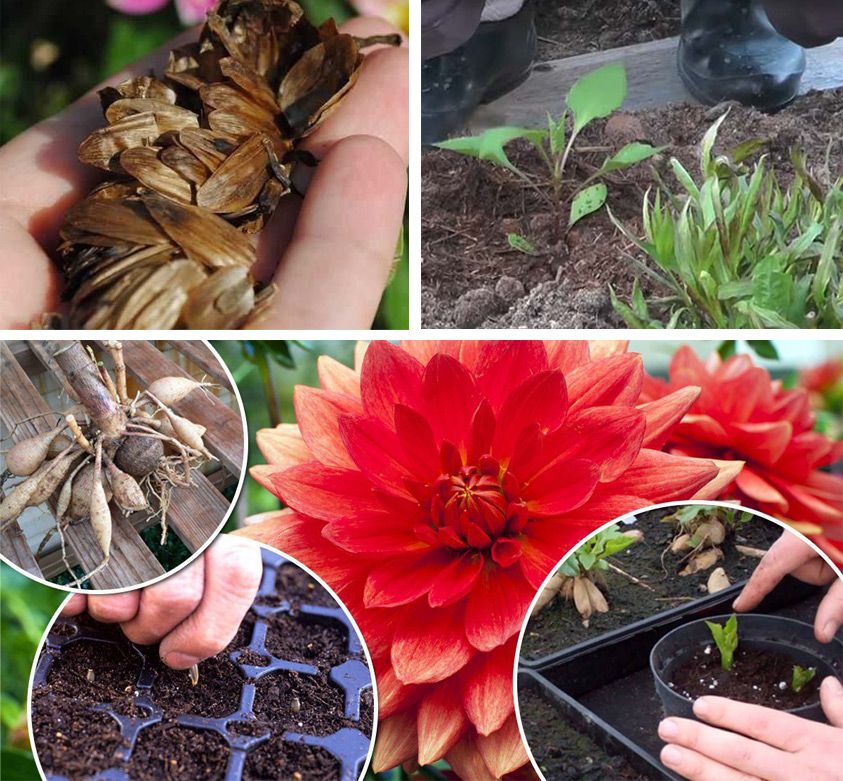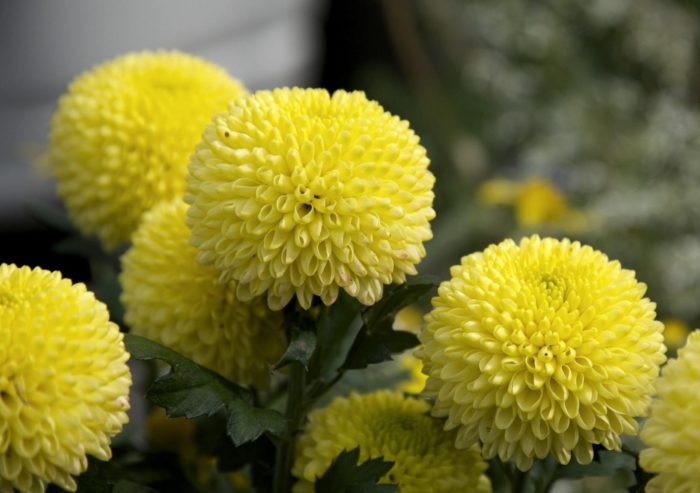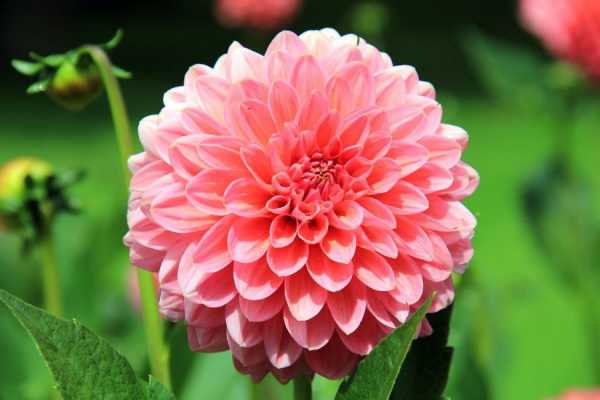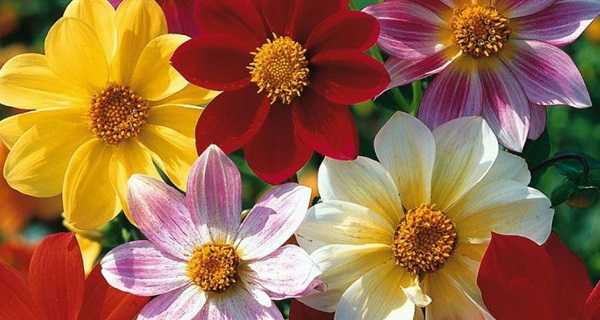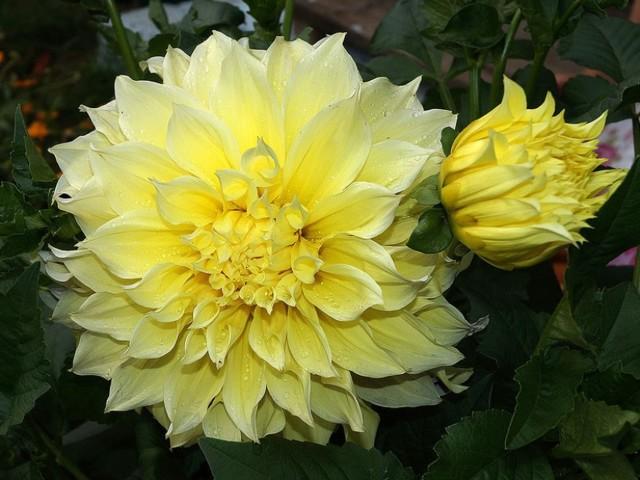Brief description of the genus
Dahlia, also known as Dahlia, came to Russia from Mexico. She received both of her names in honor of famous biologists - Dahl and Georg, who studied and described its species.
In the botanical classification, dahlias belong to the Astrovye family. They are divided into about 40 species, and varieties, according to various estimates, there are from 10 to 15 thousand. Moreover, every year more and more varieties of dahlias appear.
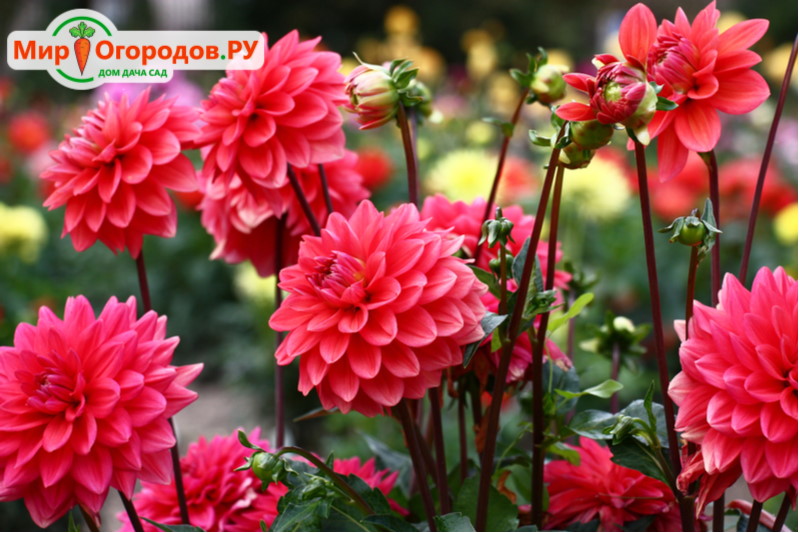
The secret of the dahlia's beauty is in the unusual structure of the inflorescences. Their baskets consist of several types of flowers that can be directed in different directions:
- Edge petals (curled inward, outward, or flat);
- Collar tubular flowers;
- Tubular flowers of the core (open or in the form of unblown buds).
By influencing the number or presence of this or that type of flowers, breeders easily get new and unlike other varieties of dahlias.
Dahlias are often called tuberous plants and their root system is called tubers. But it would be more correct to call them root tubers. Tubers are modified shoots with thickened stems that are buried in the ground. And dahlia root tubers, also called root cones, are thickened roots.
In the literature, two versions of the name of this flower are used - dahlia or dahlia, apparently, it was not possible to decide how it would be correct, therefore both versions of the name have been preserved in use, which can be used on an equal basis with each other.
Dahlia classifications
Due to the huge varietal diversity, it became necessary to introduce a certain classification of dahlias. Today there are several varieties of them:
- By stem height:
- tall (over 1.2 m);
- medium-sized (from 90 to 120 cm);
- undersized (60-90 cm);
- dwarf dahlias (up to 60 cm);
- by the size of inflorescences:
- giants (more than 25 cm in diameter);
- large (20-25 cm);
- medium (15-20 cm);
- small (10-15 cm);
- miniature (up to 10 cm).
In addition to the above grouping methods, there is also an international classification. It was adopted in 1962 and is based on the shape of the inflorescence. According to this classification, dahlias are divided into 10 groups:
- simple;
- collar;
- anemone;
- nymph;
- cactus;
- semi-cactus;
- spherical;
- pompom;
- decorative;
- transitional.
At the same time, many countries have their own classification systems with a different division into categories. For example, in France, dahlias are divided into 22 categories, in Russia - by 12, and in the USA - by 20. When choosing dahlias for your site, you should carefully study the information on varieties, read the photos and write down the names you like.
What color are they?
When drawing up garden compositions, color plays an important role. Plants with dark flowers are planted in the foreground, and with light flowers in the back. For your garden, you can choose a variety of dahlias of any color.
White
For lovers of the classics, varieties with white flowers are suitable. At night, the garden with snow-white flower beds, illuminated by lanterns, looks amazing. White Perfection is considered a classic. The size of the snow-white baskets reaches 20 cm.The bushes are high - 1.1 m.
The undersized White Star is suitable for ridges and borders. Bushes with a height of 0.6 m in July are covered with snow-white baskets (diameter 15 cm). Needle petals, ligulate. White Star blooms before the cold weather.
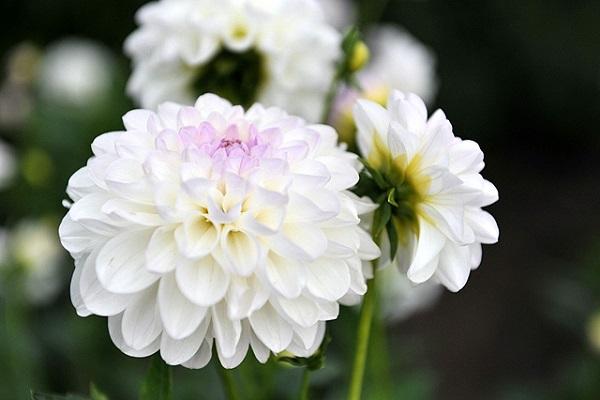
Dahlia Boom Boom White pleases with regular spherical inflorescences resembling white balls. The middle of the flower has a light creamy shade. The diameter of the flowers is 10 cm, the height of the bush is 0.9 m.Bum Boom White blooms from June to October.
Yellow
To raise the mood in the garden, you need yellow. It calms down, adjusts to serious work. Popular varieties with yellow basket inflorescences:
- The Grand Prix. High bushes - 1 m. Terry baskets, large - 25 cm.
- Pinto. Dahlia from the group of midgets. It is used as a container culture. Grown on the balcony. The height of the bushes does not exceed 35 cm. Bright yellow baskets with a diameter of 10 cm look especially impressive on them.
- Anchor. Cactus variety with large terry inflorescences (20 cm) 0.9-1.2 m high.
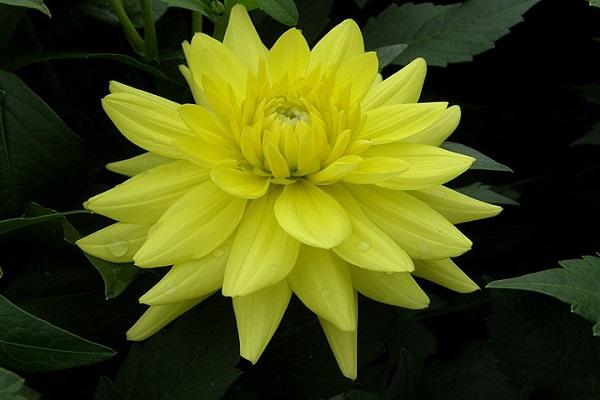
Red
Red in the garden helps a person to focus on solving serious problems. It invigorates, increases activity. You can create a bright spot with red dahlias. Among them, the Apache dahlia deserves special attention.
She has massive, tall bushes (0.9-1 m), double inflorescences, consisting of bright red needle-like flowers, the diameter of which reaches 15 cm.
The variety Garner Vander is striking in its beauty. This is a decorative dahlia with burgundy-red spherical baskets, their diameter does not exceed 15 cm.The height of the bush is 0.7-1 m.
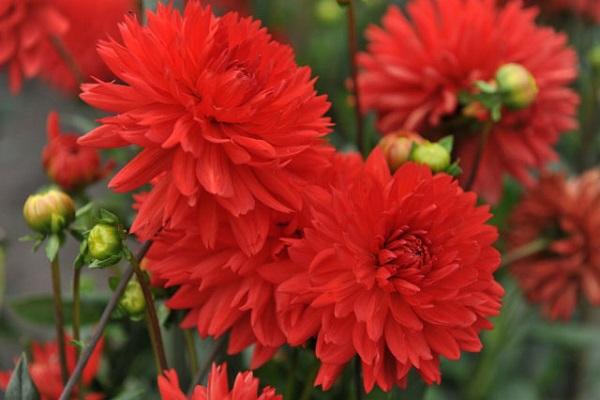
Pink
Pink goes well with all shades of green. Pink dahlias are appropriate in a romantic garden. It is not difficult to choose a variety with pink inflorescences. Here are three different species:
- Sandra (spherical);
- Princess Park (cactus);
- Jewel Pink (pompom).
Purple
Purple should be in moderation. It creates a sense of wealth. Figaro Violet Shades from the Figaro Mix series amazes with the luxury of purple-crimson flowers. Dahlia bushes are low (35 cm), they are used to decorate borders, planted in the foreground of flower beds. In a sunny place, Figaro blooms until late autumn. The annual dahlia is propagated by seeds.
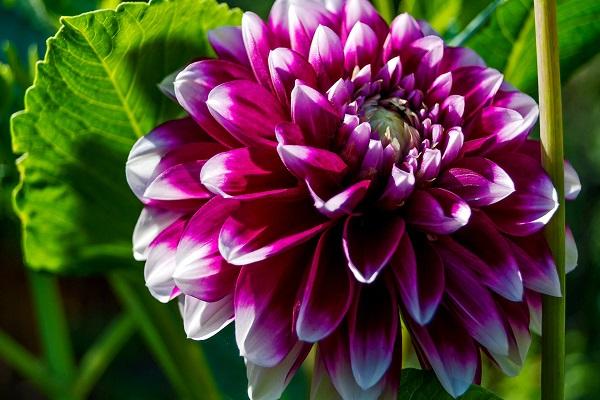
Orange
Psychotherapists believe that orange improves mood. It's nice to have an antidepressant flower bed with orange dahlia bushes in the garden. The Dutch variety Maxim is suitable for this purpose. It appeared on the market recently.
Lilac
A monochrome composition can be created from lilac dahlias. The variety My Dream strikes with delicate lilac inflorescences with slightly curled petals. For a lilac flower bed, varieties are suitable:
- Leela;
- Purple Pearl;
- Lilac night.
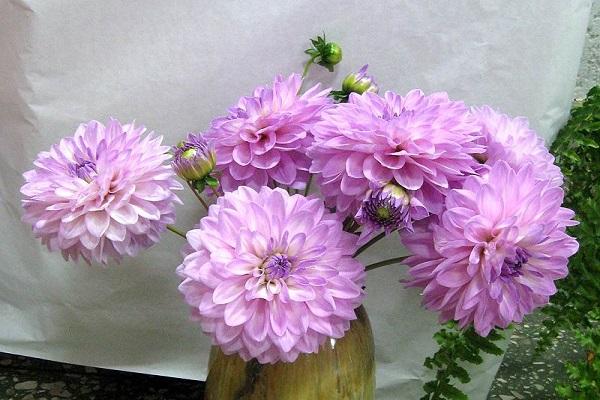
Burgundy
Burgundy dahlias look luxurious in a bouquet and on a flower bed. In compositions, they go well with colors of orange, red, purple, bright yellow. Of interest are the varieties:
- Black Prince;
- Arabian Knight;
- Flight;
- Karma Shock.
What dahlias look like: description of popular varieties
Simple varieties are the most common among gardeners. Such flowers are often called terry flowers. They can reach a height of about 60 cm, their small tubular petals and ligule edging make up a lush inflorescence. The outstanding representatives of this variety are: Yellow Hummer, Romeo and Sneesy.

Yellow Hummer is one of the most beautiful varieties
Yellow hummer
Dahlias of the Yellow Hummer variety were bred relatively recently, in 2002.The bush can reach a height of 50 cm, and its simple inflorescences, depending on care, grow up to 5-10 cm in diameter. The ligulate petals have a bright yellow color, which darkens slightly closer to center. Small tubular flowers that are located in the middle are brownish-brown in color.
For your information! Yellow dahlias Yellow Hammer are very similar to another species - the Murillo dahlia. They differ only in the shade of the petals.
Romeo
The Romeo variety is another, no less popular variety. Its thin stems can grow up to 55 cm, and the dahlia leaves growing on them have a gray-green tint. If the bush is properly fertilized and watered, the basket will grow at least 10 cm in diameter.
The color of Romeo flowers is different: scarlet in reed and burgundy in tubular. Yellow needles are located along the inner circle of the bud.
Bring down
This tall dahlia is a simple variety. It can grow up to 60 cm in height. There can be 8 reed flowers along the edge.and more. As a rule, the inflorescences of the Snezi dahlia are white, but there are beige and cream varieties. The inner reed petals are yellow; at the edges they are larger than in the very center.
Bush flowers of a simple type are known to many gardeners. However, there are many rare varieties of dahlias that few people know about.
Vegetative propagation of dahlias by cuttings
For propagation of dahlias by cuttings, shoots 5-10 cm long are used, which are cut from the neck of the uterine tuber. Such dahlias develop in the same way as those derived from the dells. They have large bushes and flowers, but their root tubers are poorly formed. To propagate dahlias with green cuttings, you need to choose healthy large root tubers, which are pre-grown in the ground in a box or greenhouse in January-February. During rearing during the propagation of dahlias by cuttings, the neck should be completely open. As a substrate for vegetative propagation of dahlias, nutrient soil with the addition of humus is suitable. It is necessary to install artificial supplementary lighting in the room, which is especially necessary for rooting cuttings.

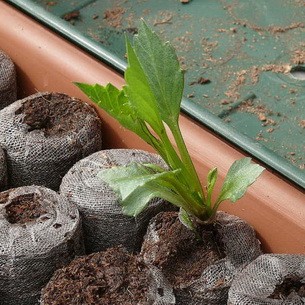
In early April, cuttings are completed. If the variety is very valuable, then cuttings can be continued until May or longer. Cuttings should be carried out on shelves, in boxes and pots. A layer of 3-5 cm of clean coarse river sand is poured onto the nutrient soil, into which the cuttings are planted. For the first few days, the cuttings should be kept in a humid environment. To achieve this, shelves and drawers should be covered with plastic wrap and placed in the shade.
Before propagating dahlias by cuttings, remember that they need an air temperature of 18-22 ° C for rooting, and a soil temperature of 20-22 ° C. After grafting is complete, the mother tubers should be removed from the ground, divided and planted in boxes or pots filled with fresh soil, then transferred to a greenhouse, where they will be prepared for planting in the ground. You should leave 1–2 shoots on the cuttings, break off the rest and put them on cuttings.
Varieties of diseases and pests
Dahlias can develop various diseases, but most often the flowers are susceptible to fungal diseases, which are caused by excessive moisture or the density of their planting.
The most common ailments that these flowers suffer from are:
- Leaf spot - a sign of an ailment is the appearance of a yellow-green tint on the leaves.
- Gray rot - characterized by the appearance of brown spots on the leaves.
- Fusarium wilting - the signs of this disease are the same for all varieties. First of all, the roots and tubers are damaged, which completely rot, after which a rapid wilting of the leaves begins and the flower is covered with pink or brown bloom.
- Brown rot - young shoots are affected by brown rot.
All of the above diseases in flowers are treatable. There are also ailments such as mycosis, fusarium, and the mosaic virus that cannot be treated.
Dahlias can also be affected by numerous pests such as strawberry nematodes, plant bugs, gamma scoops and slugs.
During the cultivation of dahlias, every gardener-gardener will have to face certain problems and nuances, but in reality everything is not so scary. The plant is not capricious and does not require constant attention. In gratitude for the minimum time given, the flower will throw out all new buds and delight the owners with the duration and riot of flowering.
vote
Article Rating
Feature and Description
All varieties of dahlias are classified according to specific criteria. The main criterion is the distribution by type of inflorescence. It is quite problematic to single out any species of this plant, since each variety has its own admirers. Someone prefers tall plants, others, on the contrary, love dwarf flowers.
The most common and demanded varieties include:
- Franz Kafka - belongs to the pom-pom group and differs from the rest with its bright purple hue, lush and abundant flowering. The plants of this variety grow up to 80 cm in height, and the diameter of the flowers is about 8 cm. Due to their rather high growth, the flowers need to be supported. This variety blooms until late autumn.
- Dipest Yellow - belongs to the pompom group. This flower grows up to 110 cm, the flower grows up to 5 cm in diameter. Despite the fact that the bush of this variety is relatively tall, it looks rather compact.
- Sylvia - flowers grow up to one meter in height and are distinguished by abundant flowering and splendor. The inflorescences in plants look like round balls and stand out in the garden with their bright salmon shade.
- Manhattan is a new Dutch variety that reaches a height of about 90 cm. The petals are pointed, bright red with yellow tips.
- Exotic - refers to tall, needle-like dahlias, which have an unusual shape of petals. They are elongated, narrow and sharp. The flowers of this variety are very beautiful, white with crimson tips.
- Snow-covered Russia is a cactus-like variety with elegant snow-white inflorescences.
- Spartacus is distinguished by its original spherical shape and rather large inflorescences.
- Lady Darlene is a tall variety that strikes with a bright yellow-raspberry color.
- Pagoda is a powerful tall variety with large white inflorescences.
- Kids Climax - yellow-lilac flowers with fairly large inflorescences.

Dipest Yellow
Every year, all new varieties go on sale, which amaze with their appearance. You can get acquainted with their characteristics in special catalogs. Each of the varieties is rightfully worthy of attention and will be able to decorate the garden, giving it uniqueness and originality, especially when mini dahlias grow in flower beds, with which gardeners often decorate the border.
Recently, the following are in great demand:
- Dahlias Gallery Mix and Galleri Bellini.
- Dahlias Evelyn and Tartan.
- Dahlias Akita and Wizard.
- Dahlias Figaro and Mignon.
- Dahlias Sakura Fubuki.
- Dahlias Black Fox,
- Santa Claus, Vuurvogel.
- Decorative dahlias Calvin Floodlight.
Landing
Planting of plants is carried out after all frosts, because dahlias are thermophilic and do not withstand significant drops in temperature. Flowers should be planted in the ground in May and early summer.
Plants are demanding on the soil and can only grow in nutritious, loose and fertile soil. It can be loam, black earth or sandy soil with peat. The reaction should be neutral or slightly acidic. Organic fertilizers are used to increase fertility.
The choice of location is important. In direct sunlight, the flowers get burned, the leaves dry out. The best option is a well-lit but shaded area. The area must be protected from drafts and strong winds: although the stems are dense, they are fragile and break easily.
The tubers are placed in the prepared grooves of the appropriate size. Before planting, it is advisable to fill the bottom with a layer of organic matter, for example, manure or compost. Do not deepen the dahlias too much: the root collar should rise 1.5-2 centimeters above the soil surface.
Breeding dahlias: how to divide tubers before growing
When the buds sprout, you can start dividing the root tubers. Using a sharp knife, the root-tuber is cut into pieces so that each has a part of the root collar with one or two eyes. The size of the root tuber and the number of eyes on it depends on how many parts it will be cut.
It is necessary to divide the tubers of dahlias as carefully as possible: in order to prevent contamination of the planting material, it is recommended to constantly process the knife with formalin or alcohol. To avoid the death of sprouts, the root tuber must be cut away from them and not cut across the fibers.The pots or boxes are filled with good soil and the resulting cuttings are planted in it. The pots should be placed in a bright place in the greenhouse or on the windows, the temperature should be 16-22 ° C. Delenki should be watered sparingly. From about the second half of June, plants can be planted in open ground.
Popular varieties
Varietal dahlias with different characteristics of bushes and inflorescences are in demand among flower growers. Describing the best varieties will make it easier to choose. The selection includes plants of different classification groups. All are suitable for cutting.
Spartacus Bohemian
Tall (1.5 m) variety from the group of decorative dahlias. Spartacus blooms in July, flowering lasts until frost. It is a perennial, it forms impressive inflorescences - 25-30 cm. The petals have an original color: bright yellow stripes on a cherry background.
Fleur
Fleur is the best in the Waterlily Dahlias group. It is grown for cutting. The plant is tall, the length of the stems is 1.2 m. The type of inflorescence is terry, the size is 25 cm. The petals have a snow-white color. The plant blooms on July 10-15.

Maxi
This is a variety series, it includes tall (1-1.2 m) cactus, semi-cactus ornamental varieties with the same flowering times, in July-September. The series includes spectacular varieties with large inflorescences (30 cm). Dahlias Maxi are intended for flower beds, flower beds.
Merluza
Dahlia Merluza belongs to the decorative group, its height is 1 m. She has lush, terry baskets with a diameter of 15 cm, consisting of twisted yellow petals with red tips. The Merluza variety blooms from July to September.
Red Pigmy
Semi-cactus variety. Perennial blooms from July to October. The color of the baskets is red, the size is 10-12 cm, the peduncles are good in cutting. Red Pigmy bushes are low (0.3-0.4 m), they are used to decorate balconies, patios, planted in flower beds and in pots.
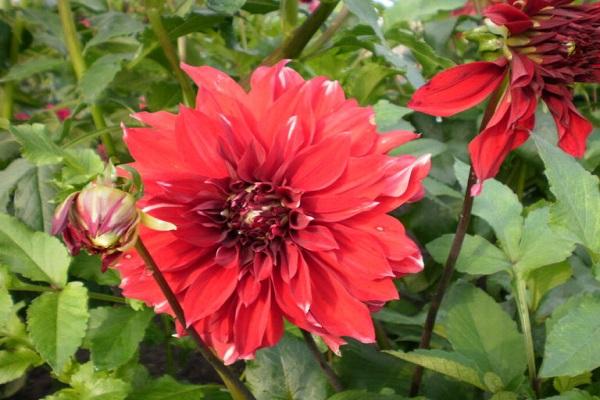
Joan of Arc
The cactus variety is 1.2 m high. The middle is pale yellow, the feathery petals are lavender-pink. Baskets are medium, up to 18 cm in diameter. The variety will decorate the garden, it is recommended to plant it in flower beds. Peduncles are used when making bouquets.
Gloria
A tall variety of cactus dahlias. Gloria's height is 1.4 m. Old variety (1964), bred in Germany. The diameter of the graceful baskets is 15-20 cm. The color of the petals is pink.
Mignon
Propagated by seeds. Flowering lasts from July 10-15 to October. Mignon is a series of low dahlias (0.45 m) of different colors - from white to lilac. Garden beds are decorated with compact bushes, they are grown in pots on a loggia.
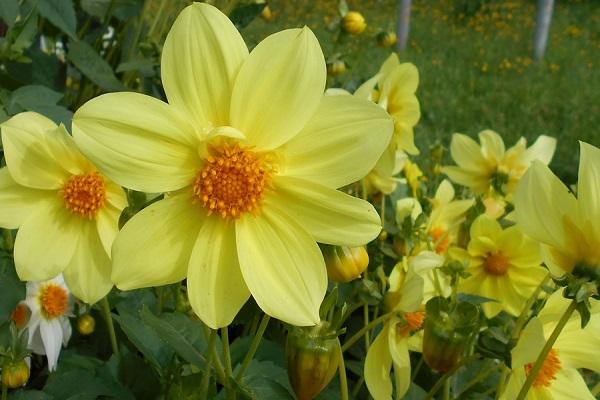
Volatile
This is a mixture of seeds of several types of dahlia (cactus, pompom). Plants of this series bloom from August 10-15 until cold weather.
Aloha
Cactus variety. The height of the Aloha dahlia is 0.8-1 m. The type of baskets is terry, they are large with long, narrow petals of bright yellow color, with the tips of a fiery red hue. The variety blooms profusely, until frost.
Duet
This is an American variety. It is considered decorative. It was taken out in 1955. He has medium (16 cm) brightly colored baskets with dark cherry-colored petals. They are white at the ends. The bushes are high (1.1 m).

Almandz Joy
Flower stalks of Almandz Joy are suitable for cutting. Delicate lilac flowers are an excellent decoration for a bouquet. Terry baskets are large (30 cm). Almandz Joy is used in group garden compositions. The height of the bush is average - 0.9 m.
Mystery Day
Decorative variety with large (16-20 cm) terry baskets. The background color is burgundy, the tips of the flat petals are white. The bushes have a spreading shape, average height (0.8 m). Blooms from July to frost.
Freecolette
Dutch cactus species with bushes 1-1.2 m tall and bright scarlet baskets. The petals are narrow, needle-like. They show white strokes on a bright scarlet background. The size of the Fricolet baskets is 10-15 cm. Flowers bloom in July.
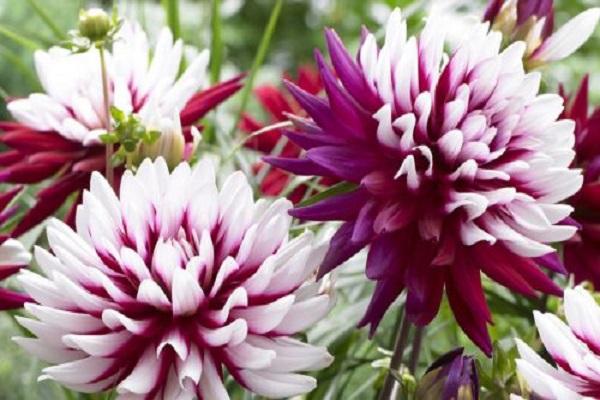
Arabian night
Spectacular wine-red baskets with a diameter of 15 cm. Bushes (0.8-1 m) are covered with large feathery leaves. Powerful peduncles are good at cutting. The variety is widely used in landscape design.Dahlia Arabian night serves as a decoration for rabatki, group compositions.
Zoe Rae
Plant height 1.1-1.2 m. Zoe Ray is an ornamental dahlia variety. Inflorescences-baskets are vanilla-yellow with lilac edging of petals. The diameter of the basket is 15-20 cm. Flowering lasts from July to September.
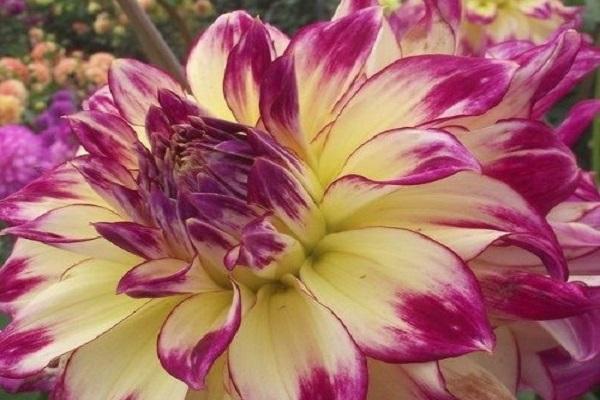
Kenora Macob
Bushes 1-1.2 m tall are covered with small dark green leaves. In July, dark red flowers bloom on them, their diameter is 15-18 cm. Kenora Makob is an ornamental variety that blooms until frost.
In the garden, you need to plant several dahlia bushes with baskets of different colors and shapes. Their long bloom will delight you until late autumn.
2> Cactus
This variety is one of the most beautiful and tall. With proper planting and care, the bush can grow up to 150 cm in height, and the inflorescences reach 25 cm in diameter. The variety got its name because of the petals, they are double and needle-like to the touch.

Cactus varieties
Caproz Josephine
The originality of the Kaproz Josephine variety is given by pointed and, as if cut in half, double flowers. The color of the petals from the edge to the middle goes from white-pink to yellow. Josephine blooms for a very long time and abundantly.
Nuit d'Ete
Nuit d'Eté is one of the most beautiful cactus varieties. Light green leaves grow on a bush no more than 1 m in height. On a 20-centimeter inflorescence, only ligulate flowers are visible, which look like elongated cones of a dark red hue.
For your information! Due to its striking appearance, Nuit d'Eté is popular not only with gardeners, but also with florists.
Sugar Diamond
Sugar Diamond is a Dutch cactaceous species that grows up to 1 m or more. A basket with a diameter of 15 cm is formed from ligulate needle-like flowers. The blossoming bud has a rich pink hue, only in the very center are yellow shades noticeable.
Planting and caring for dahlias (with video)
For ease of care when planting, dahlias of high and medium height are placed in the form of groups, at a distance of up to 1 m from each other; dwarf ones are planted in a bed at a distance of 0.3-0.5 m.
Plants are planted in flower beds after May 20. During planting of flowers of dahlias, it is desirable to introduce humus. When propagated by cuttings, tubers that have been preserved in a cool place are brought into a bright warm room in February and placed tightly on the shelves of the greenhouse, sprinkling with a thin layer of earth on top. Growing shoots, which have reached 8-10 cm in length, are cut and planted in sandy soil or clean sand in a drawer in a greenhouse.
Rooting takes place at a temperature of 20 ° in a shaded and glass-covered box. After rooting, the cuttings are planted in pots, followed by transplantation into larger pots and placed in a light greenhouse or greenhouse, from there they come for planting. Cutting plants in the first summer form a bush and bloom, but later multiplied by division. After the first autumn frosts, the stalks of the dahlia are cut off, the tubers are dug up, dried and laid for winter storage in a cool greenhouse or in a moderately dry basement at a temperature of 5-6 °. All tubers must be labeled with the variety designation. Currently, dwarf dahlias are widespread. They can be propagated by sowing seeds (in February) followed by picking into pots.
Stepsons remove the entire length of the stem to the internode, behind which is the bud. If dahlias are grown for cutting, then to obtain larger and more beautiful flowers, not only stepchildren are removed, but also part of the buds. Most often, 3 buds are formed on each stem, and the middle one blooms first, but has a short pedicel. It is of little use for cutting and therefore it is precisely it that is subjected to pinching.
Dahlias collar, pompom, dwarf, as well as small-flowered varieties do not stepchild.
Fertilizing will help dahlias grow and bloom luxuriantly.The first time fertilizer is used 2 weeks after planting, and then applied every 10 days.
After germination of tubers, 1-3 best shoots are left on them, which will later develop into a stem. Dahlias grown from cuttings leave only one shoot. Everything else is cut off.
To get standard dahlias, pinch the first bud and break out the first shoots that form in the axils of the leaves under the first bud. Due to this, new shoots will develop in the lower part of the plant.
If you leave 4-6 shoots, there will be fewer flowers, but they will become larger.
When a dahlia has a bud, new shoots grow from each pair of leaves of a given shoot. Of these, only 2 are left, located at the base of the shoot. The rest are pinched.
In the fall, pruning is stopped.
Watch the video of planting and caring for dahlias, which shows how to grow these plants:
Next, you will learn when to dig up and how to store the dahlias.
Features of growing "babies"
Dahlias of low-growing varieties, with regard to planting and care, do not require special agronomic knowledge and agrotechnical techniques. If you have grown any bulbous, you can handle them without any problems. It is best to plant them with tubers. How - we will consider step by step.
Choosing and preparing a landing site
The plant is from southern latitudes (Mexico, Colombia, Chile), therefore it needs a lot of light. When planting dahlias in the garden, choose areas that are in the sun for at least 6 hours during the day. Arrange flower containers accordingly. In the shade, the plant will grow green and bloom much worse.
Flowers need soil that is loose, fertile, and sufficiently moisture-consuming. It is better to introduce humus, any other organic matter in the fall for deep digging.
Landing
Low-growing dahlias can be planted with sprouted tubers. To do this, in April they are planted in a pot, and at the end of May, June they are transferred into open ground. Unsprouted tubers are recommended to be soaked in water for 6-8 hours before planting.
The timing of planting is determined by the state of the soil at a depth of 10-15 cm - it should warm up to 10⁰ C. For the middle lane, this is not earlier than the second half of May.
One of the reasons why you cannot rush to planting is that dahlias do not deeply deepen, and they sprout rather quickly. The depth of the hole (groove) is determined in such a way that the tuber, laid horizontally, is covered with a 5–7 cm layer of soil. In containers, there should be at least 2.5 cm between the root collar and the soil surface.
The distance between plants for dwarf varieties is 20-25 cm.
Subtleties of care
After the emergence of seedlings, the plants are regularly loosened, cleaned of weeds, slightly huddled to stimulate vegetative processes and make the bushes more resistant.
Dahlia is a drought-resistant crop, it needs watering only if there is no rain for a long time. In the hot summer months, watering is usually practiced 1 time in 7-10 days, 5-7 liters under a bush.
If humus was introduced during planting, you can not feed the flowers at all, or do this no earlier than July. During budding and flowering, phosphorus-potassium dressings (40 g / m²) give a good effect, which is applied every 2-3 weeks. Since mid-August, fertilizers are not recommended to be applied, since at this time the tuber is already ripening.
Remember to remove dried flowers. This stimulates the growth of new buds and increases the decorative effect of the flower bed.

